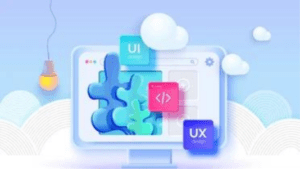Top Back-end Development Frameworks for Web Development
Django:
Django is a high-level Python web framework that follows the model-view-controller (MVC) architectural pattern. It emphasizes rapid development, code reusability, and the “Don’t Repeat Yourself” (DRY) principle. Django comes with a powerful Object-Relational Mapping (ORM) layer, which simplifies database integration and allows developers to work with databases using Python objects. It also provides built-in support for user authentication, caching, URL routing, and template rendering.
Key Features:
Admin interface: Django’s admin interface automatically generates a fully-featured administrative interface based on your models, making it easy to manage database records.
ORM: Django’s ORM allows developers to interact with the database using Python code, eliminating the need for writing raw SQL queries.
URL routing: Django provides a flexible URL routing system, making it easy to define clean and user-friendly URLs for your web application.
Scalability: Django’s architecture is designed to handle high-traffic websites and scale with the increasing demands of your application.
Community and ecosystem: Django has a vibrant community and a rich ecosystem of packages and libraries, making it easy to extend and customize your applications.
Use Cases: Django is suitable for a wide range of web applications, from content management systems and e-commerce platforms to social networking sites and data-driven web applications.
Ruby on Rails:
Ruby on Rails, often referred to as Rails, is a popular web application framework written in Ruby. Rails follows the convention-over-configuration principle, which means it provides sensible defaults and conventions to minimize the amount of configuration needed. Rails embraces the MVC architectural pattern and emphasizes developer productivity and code simplicity. It comes with a wide range of built-in features and libraries that help developers build web applications rapidly.
Key Features:
Convention over configuration: Rails provides a set of conventions that guide developers in organizing their code and project structure, reducing the need for explicit configuration.
ActiveRecord: Rails’ ActiveRecord ORM allows developers to work with databases using Ruby classes and objects, making database interactions intuitive and straightforward.
Gems: Rails has a vast ecosystem of gems (Ruby libraries) that extend its functionality and provide additional features such as authentication, caching, and integration with third-party services.
Scaffolding: Rails provides a powerful scaffolding feature that automatically generates code for common web development tasks, saving developers time and effort.
Testing: Rails encourages test-driven development (TDD) and comes with built-in testing frameworks and tools to facilitate writing tests for your application.
Use Cases: Ruby on Rails is well-suited for building web applications of various sizes and complexity, including e-commerce platforms, social networks, and content-driven websites.
Express.js:
Express.js is a minimalist and flexible web application framework for Node.js, a popular JavaScript runtime. It provides a simple and unopinionated approach to web development, giving developers the freedom to structure their applications as they see fit. Express.js focuses on the core features required for web development, such as routing, middleware support, and template rendering, while leaving the choice of additional libraries and tools to the developers.
Key Features:
Middleware support: Express.js has robust middleware support, allowing developers to add custom functionality to the request/response pipeline, such as authentication, logging, and error handling.
Routing: Express.js provides a concise and flexible routing mechanism that enables developers to define the endpoints and handle the HTTP methods (GET, POST, PUT, DELETE, etc.) for their application.
Template engines: Express.js integrates seamlessly with various template engines, such as Pug, EJS, and Handlebars, allowing developers to generate dynamic HTML pages easily.
Lightweight: Express.js has a small footprint and minimal overhead, making it a great choice for building lightweight and high-performance web applications.
Community and ecosystem: Express.js has a large and active community that has contributed numerous middleware, plugins, and extensions to extend the framework’s functionality.
Use Cases: Express.js is suitable for building APIs, single-page applications (SPAs), and server-rendered web applications that require flexibility and a lightweight approach.
Laravel:
Laravel is a PHP web application framework known for its elegant syntax, expressive syntax, and developer-friendly features. It follows the MVC architectural pattern and focuses on developer productivity and code maintainability. Laravel provides a wide range of features out of the box, such as routing, database ORM, caching, queuing, and authentication. It also includes a powerful command-line interface (CLI) called Artisan, which automates common development tasks.
Key Features:
Artisan CLI: Laravel’s Artisan CLI provides a set of commands for generating code, running tests, and performing common development tasks, increasing developer productivity.
Eloquent ORM: Laravel’s Eloquent ORM simplifies database interactions by allowing developers to work with databases using expressive PHP syntax and powerful query builders.
Blade templating: Laravel’s Blade templating engine provides a concise and intuitive syntax for generating dynamic views, making it easy to create reusable and maintainable templates.
Authentication and authorization: Laravel comes with built-in support for user authentication and authorization, making it easy to implement secure login systems and access control.
Laravel ecosystem: Laravel has a thriving ecosystem with a wide range of packages and libraries that extend the framework’s functionality and enable rapid application development.
Use Cases: Laravel is suitable for building a variety of web applications, including content management systems, e-commerce platforms, and business applications.
Flask:
Flask is a microframework for Python that provides the essentials for building web applications without imposing too many constraints or dependencies. It is designed to be simple, lightweight, and easy to learn, making it a popular choice for small to medium-sized projects and prototyping. Flask follows the WSGI (Web Server Gateway Interface) specification and can be easily integrated with other libraries and tools in the Python ecosystem.
Key Features:
Lightweight: Flask has a small codebase and minimal dependencies, making it easy to understand, extend, and customize.
Extensibility: Flask provides a flexible extension system that allows developers to add additional functionality, such as database integration, authentication, and caching, using a wide range of third-party extensions.
Routing: Flask provides a straightforward routing mechanism that allows developers to map URLs to view functions easily.
Jinja2 templating: Flask integrates with the Jinja2 templating engine, which offers a powerful and flexible syntax for generating dynamic HTML pages.
RESTful support: Flask provides tools and libraries that simplify the development of RESTful APIs, making it a popular choice for building API-driven applications.
Use Cases: Flask is ideal for building small to medium-sized web applications, prototypes, and API services that require flexibility, simplicity, and extensibility.
ASP.NET Core:
ASP.NET Core is a cross-platform, open-source framework for building modern web applications using the C# programming language. It is the next generation of Microsoft’s ASP.NET framework, designed to be modular, lightweight, and high-performance. ASP.NET Core supports both the MVC and the newer Razor Pages architectural patterns, allowing developers to choose the approach that best fits their application’s requirements. It provides a rich set of features for web development, including routing, model binding, dependency injection, and authentication.
Key Features:
Cross-platform: ASP.NET Core runs on Windows, Linux, and macOS, providing flexibility in choosing the operating system for hosting and deployment.
Performance: ASP.NET Core is optimized for high performance, offering features like request/response caching, asynchronous programming, and efficient resource utilization.
Dependency injection: ASP.NET Core has built-in support for dependency injection, making it easy to manage and inject dependencies into your application’s components.
Razor Pages: In addition to the MVC pattern, ASP.NET Core introduces Razor Pages, a lightweight alternative for building web pages without the need for separate controllers.
Security: ASP.NET Core provides robust security features, including authentication and authorization mechanisms, to ensure the safety of your web applications.
Use Cases: ASP.NET Core is well-suited for building enterprise-scale web applications, APIs, and real-time applications that require high performance and security.
Spring Boot:
Spring Boot is a Java-based framework that simplifies the development of stand-alone, production-grade Spring applications. It builds on top of the popular Spring Framework and provides a convention-over-configuration approach to application development. Spring Boot focuses on simplicity, developer productivity, and ease of deployment by providing out-of-the-box configurations and reducing boilerplate code. It integrates well with other Spring projects and frameworks, such as Spring Data, Spring Security, and Spring Cloud.
Key Features:
Auto-configuration: Spring Boot automatically configures various components and libraries based on sensible defaults, reducing the need for manual configuration.
Embedded containers: Spring Boot includes embedded servlet containers (Tomcat, Jetty, or Undertow) that allow developers to package their applications as standalone JAR files, simplifying deployment and distribution.
Spring ecosystem: Spring Boot leverages the Spring ecosystem, providing seamless integration with other Spring projects, such as Spring Data for database access and Spring Security for authentication and authorization.
Actuator: Spring Boot Actuator provides production-ready features for monitoring and managing your application, including health checks, metrics, and configuration management.
Developer tools: Spring Boot offers a set of developer tools that enhance developer productivity, such as automatic application restart, live reload, and detailed error messages.
Use Cases: Spring Boot is suitable for building a wide range of Java-based web applications, including enterprise applications, microservices, and RESTful APIs.
Conclusion:
Backend development frameworks are essential tools for building robust, scalable, and maintainable web applications. The frameworks discussed in this article, including Django, Ruby on Rails, Express.js, Laravel, Flask, ASP.NET Core, and Spring Boot, provide developers with a solid foundation and a rich set of features to streamline the development process. The choice of framework depends on factors such as the programming language preference, project requirements, scalability needs, and developer expertise. By selecting the right backend development framework, developers can accelerate their web development workflow and deliver high-quality applications efficiently.



